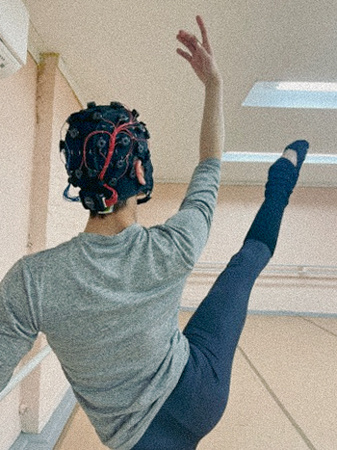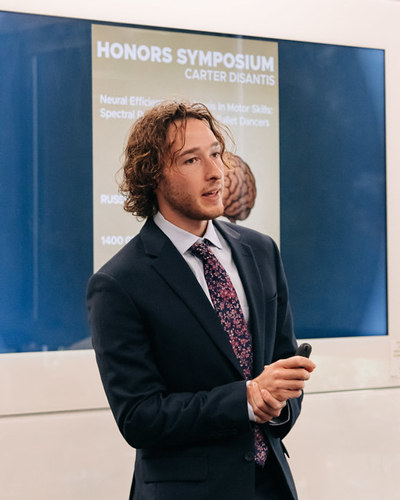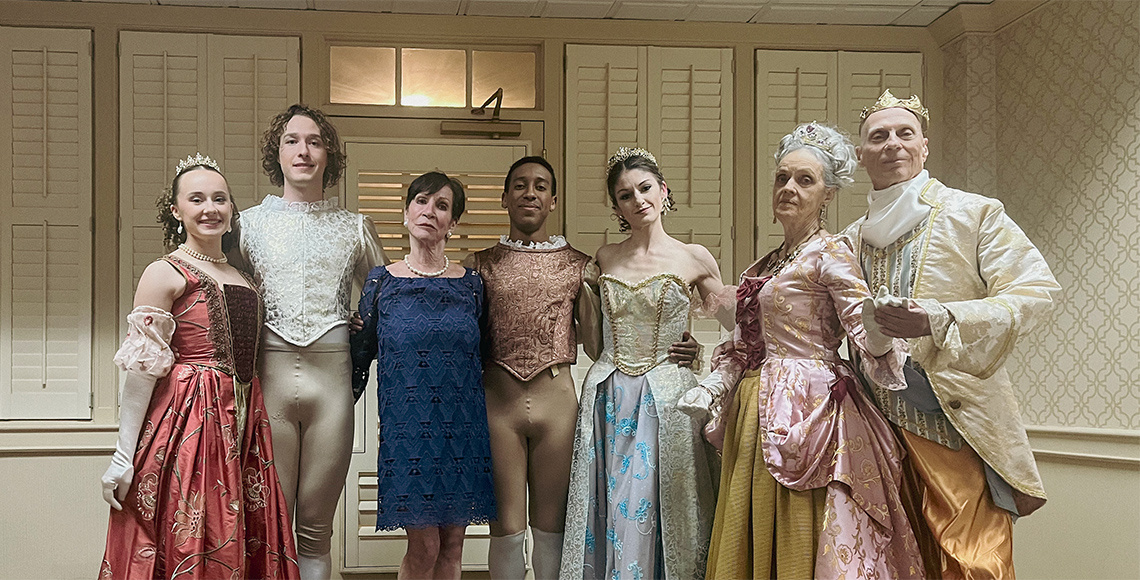Dancing has always been a part of Carter DiSantis’ life, as has an interest in neuroscience. The South Carolina Honors College graduate from Johnson City, Tennessee, grew up dancing his way through summer music festivals and following educational content creators who introduced him to the wonders of the brain. Though he didn’t study either formally — he danced socially, watched neuroscience content when he had the time — the early explorations left an impact. These were the topics that brought him joy, outlets for his intellectual curiosity.
Fast-forward to the spring of 2025, which finds DiSantis wrapping up his undergraduate career at the University of South Carolina. He’s graduating with a degree in neuroscience, his own EEG machine, classical ballet training and, you guessed it, an Honors senior thesis that combines art and science. With the influence of supportive mentors in the arts and the sciences, DiSantis has found ways to balance his passions for ballet and the brain.
‘Step into the dance world’
DiSantis transferred into the Honors College his sophomore year. According to DiSantis, “I decided that I wanted to be a better student, and I was thinking about the ways I could do that.” The Honors College was just the place, and he was especially drawn to the unique course offerings. In fact, one of these courses would change the trajectory of his undergraduate career.
Due to his love of dance, DiSantis enrolled in The Impact of Dance on the Film Industry, taught by “living legend Susan Anderson,” as DiSantis calls her.
“The class was amazing,” he says. “That just had the biggest impact on my entire experience here because of the things that came from Susan Anderson.... She’s such a creator. She creates things, she says, ‘Yes,’ she wants to make things happen. And she did. She helped me step into the dance world.”
Anderson took her students to ballet performance and introduced DiSantis to John Whitehead, the director of the Columbia Music Festival Association. “She was like, ‘Hey, this guy needs to learn how to dance for real,” says DiSantis. “Let him come dance for you.’”
And with that, DiSantis’ formal ballet training began. Since he had never studied dance, every aspect of the learning process was a revelation. He found himself fascinated by the technical aspects of dancing, as well as the physics of movement.
“I never thought about dance that hard before,” he says. “It was just always something you just did. But really trying to break it down into a class setting really changed the way I understood dancing.”
At one point, he recalls, he was taking more ballet classes than neuroscience classes. He even went as far as interviewing ballet dancers for his WUSC radio program. Once DiSantis discovered the intricacies of ballet, there was no turning back — literally. DiSantis was particularly interested in spinning, and he knew that he had to learn more about what was happening in dancers’ brains as they pirouetted and fouttéed.
The science of art
Before his foray into ballet, DiSantis was researching with psychology professor Sam McQuillin in the Youth Empowerment in Schools and Systems (YESS) Lab. DiSantis cites McQuillin as another influential mentor: “Susan is the type of person to say yes to things. So is Sam. That’s literally the name of his lab!”
During his research in the YESS Lab, DiSantis learned that it was possible to purchase an electroencephalograph, or EEG, a machine that measures electrical activity in the brain. McQuillin helped him apply for a Magellan Grant to purchase his own EEG machine. DiSantis also applied for an Honors College Research Grant to fund his purchase.

Due to DiSantis’ interest in neuroscience, McQuillin introduced him to psychology professor Caitlin Hudac, who would become DiSantis’ Honors thesis director. Hudac helped DiSantis refine his research interests and determine how to make the most of his EEG machine. While it wasn’t possible to use the EEG to measure brain activity while dancers turned, as DiSantis initially proposed, there was another avenue to explore.
“Due to that process, that feedback, I eventually found a line of research that already existed about balance,” he recalls. “There’s lots of EEG work regarding balance, the cortical role of balance, balance tasks of increasing difficulty, functional brain network for balance. There’s a whole bunch of stuff there. And I was like, ‘Okay, this relates.’ So my work ended up focusing on balance.”
He worked with two groups of dancers: experts and novices. DiSantis aimed to discover whether brain activity differed across the groups when they were given a balancing task. He found that, when transitioning from standing to balancing, the expert dancers exhibited smaller changes in spectral power. This could possibly indicate reduced cortical activation and more efficient brain function. The findings also support the idea that expert brains operate more efficiently and require less neural energy to perform highly practiced skills.
Next (dance) steps
When he isn’t conducting dance-related research, DiSantis is performing. This spring, he made his professional debut, dancing for a Lafayette Society event in Charleston.
“Everybody there was dressed up like it was the 1700s, and we did Baroque dancing. But it was kind of more ballet than they did back in the day, because Baroque dance was actually really boring,” he quips. “So, we spiced it up.”

Looking to the future, DiSantis hopes to continue with both dance and neuroscience research. He plans to attend medical school and is intrigued by a dance science and medicine program in New York. He’s keeping his options open, continuing to say yes to his intellectual curiosities — and he suggests that incoming Honors students do the same.
“Don’t wait. My freshman year, I wish I would have been more proactive in getting involved in research. Learn about the professors who are on this campus, check out their labs. They all have websites,” he says. “There’s actually so many really cool, talented, professional people who have influence in the international neuroscience conversation. There’s important research being done here on campus, and you can participate, and you should.”
